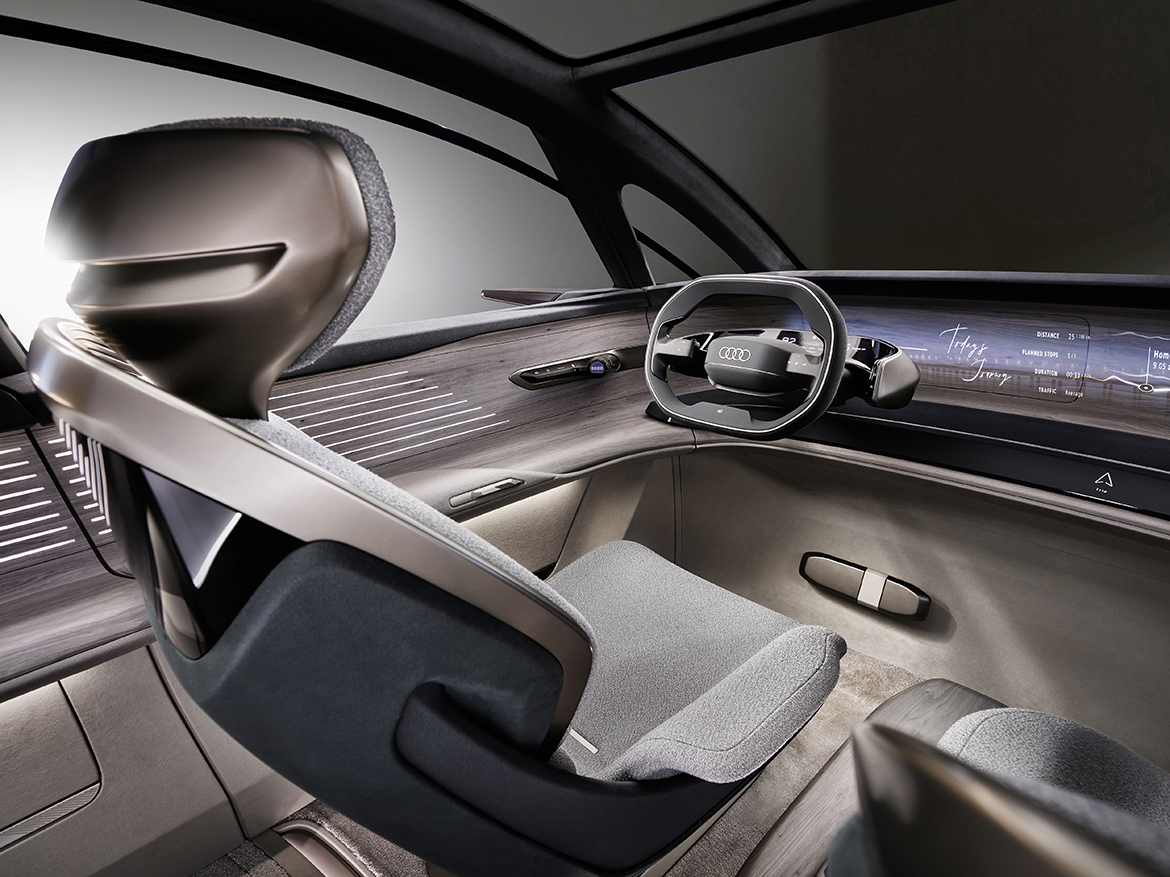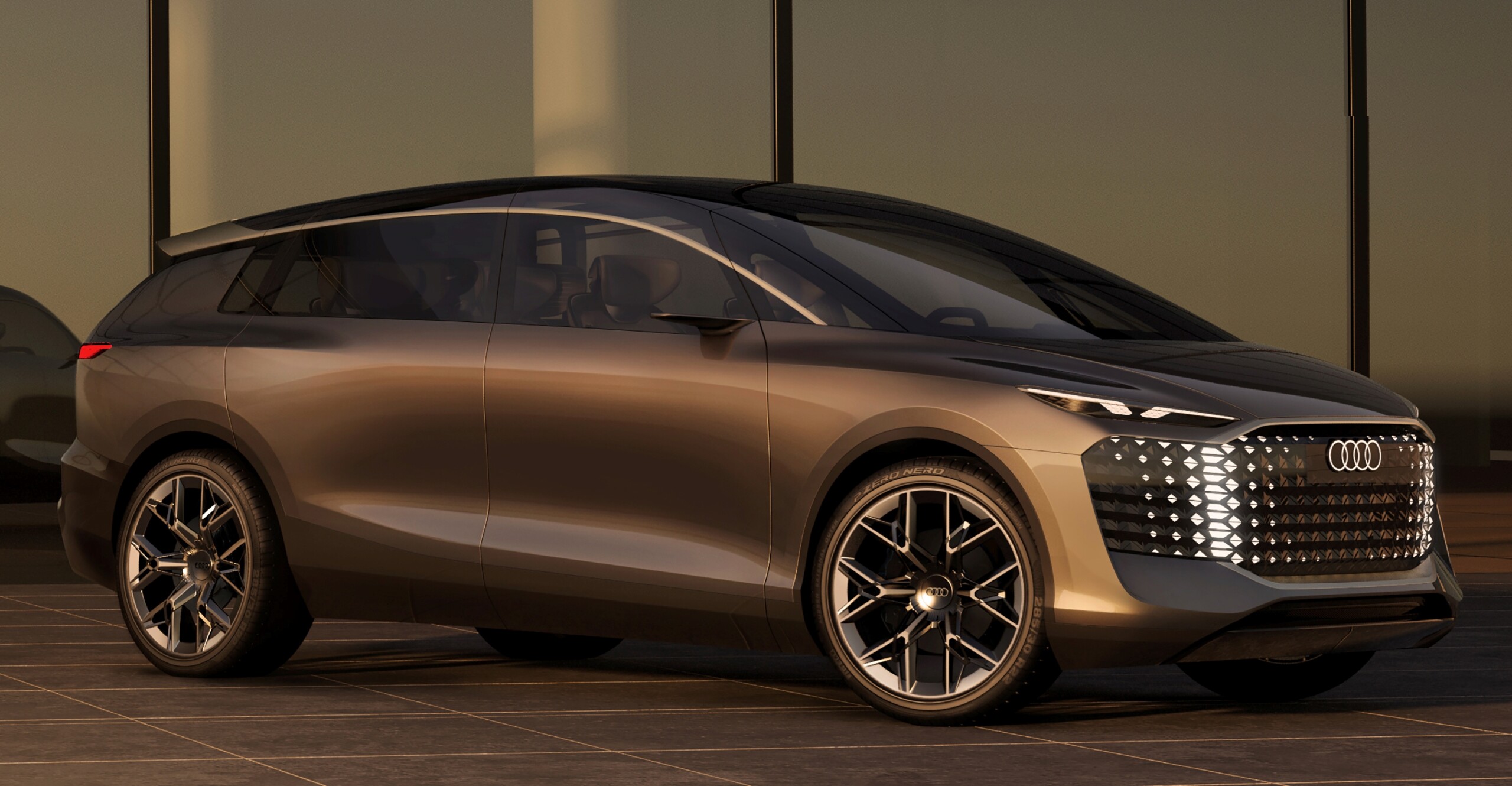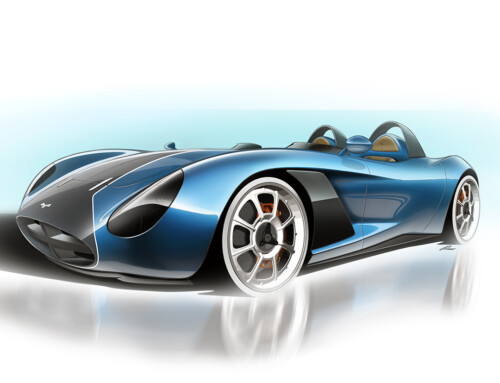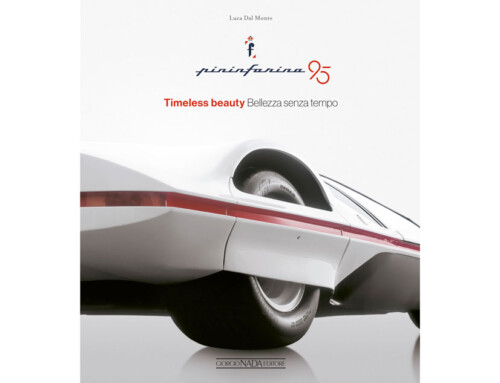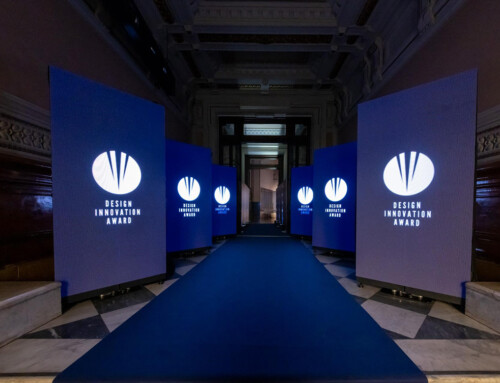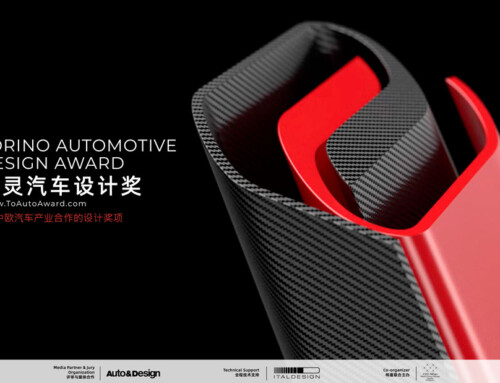After Skysphere and Grandsphere, Audi presents the third concept of the “sphere” family: the Urbansphere, a luxury MPV designed for mobility in the megacities of the future. The development process has seen the close collaboration of the Audi Design Centers in Beijing and Ingolstadt and, for the first time, potential Chinese customers have been involved, contributing their own desires and experiences. The interior of the Audi urbansphere concept is the result of this “co-creation” model. The car, characterized by generous dimensions, is presented as a lounge called to become a third living space during the hours spent in traffic. Audi urbansphere combines refined finishes with high-tech solutions: thanks to Level 4 autonomous driving, the cabin is devoid of steering wheel, pedals and display. The car evolves into an experience device assisted by a complete digital ecosystem.
Audi Urbansphere is the concept with the most generous dimensions within the sphere family as well as the largest Audi prototype ever. At 5.51 metres long, 2.01 metres wide and 1.78 metres high, it breaks with the stylistic conventions of the segment, since – as mentioned – it is developed from the inside out: firstly defining the lines and characteristics of the space around the passengers, identified as the “sphere” of their needs, and only secondly the shapes of the bodywork. The wheelbase of 3.40 meters favors the habitability and has no equal among competitors. The passenger compartment is not subject to the need to cram as many seats, storage compartments and functional elements as possible into a limited volume, but is oriented towards the passengers’ need for extraordinarily large space.
The doors of the Audi Urbansphere concept open like a book. The absence of a central pillar means that the cabin is immediately apparent in all its spaciousness. The outward-facing seats and the “red carpet light” projected onto the floor make getting on board an elegant and comfortable experience. The cabin features four individual seats arranged in two rows. The rear seats are exceptionally generously sized and can be adjusted in many ways. By reclining the backrests by up to 60 degrees, a perfect sleeping position is achieved, accentuated by the extension of the leg supports. During a conversation, a passenger can easily address his or her partner by turning the seat. If you want maximum privacy, you can isolate the head area by means of the screen behind the headrest.
The minimalist design of the cockpit reaches its peak before the activation of the driving functions. This is the phase in which the “digital detox” trend reaches its acme: neither the instrumentation gauges nor the classic touch displays are visible in favour of clean surfaces in briarwood, wool, natural and synthetic fibres. The chromatic zones of the interior become lighter in the transition from top to bottom so as to create, together with the natural incidence of light, a homogeneous and airy interior. As soon as the car comes to life, information is displayed in the form of projections along the wood panelling of the dashboard and at the base of the windscreen. Depending on the driving mode – manual or Level 4 autonomous – the projections extend across the full width or are divided into separate sections for driver and front passenger. In “autonomous mode”, the projection surface becomes a cinema screen for entertainment or video conferencing. Switching between contents, for example between music and navigation, is carried out by a sensor bar in the vicinity of the projector. This console groups together and displays all the functions and applications active on board.




